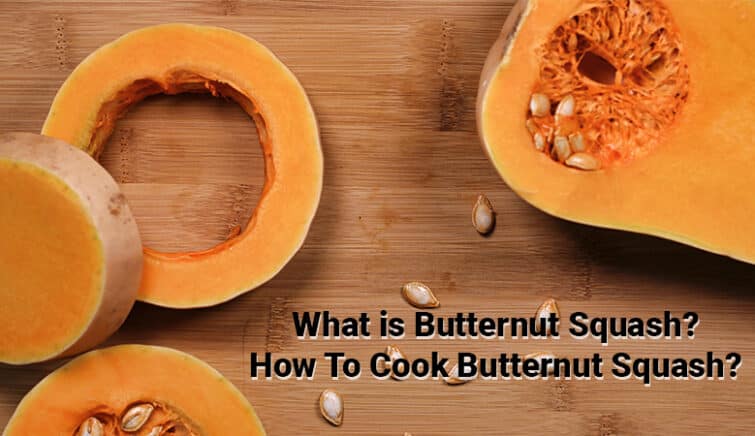Introduction
If you’re wondering how to cook butternut squash in a way that’s easy, delicious, and full of flavor, you’re in the right place. Butternut squash is a versatile fall and winter vegetable known for its naturally sweet, nutty taste and rich, orange flesh. It’s full of nutrients like vitamin A, fiber, and antioxidants. This makes it a tasty and healthy choice for any meal.
This guide covers all you need to know about butternut squash. You can roast it for a cozy side dish, sauté it for a savory meal, blend it into creamy soups, or mash it for a healthy comfort food twist. Each step is clearly explained. Learning how to cook butternut squash the right way can help elevate your cooking skills and bring seasonal flavor to your table.
Perfect for beginners, we’ll cover how to prepare, peel, cut, and cook butternut squash using several easy and effective methods. You’ll get helpful storage tips, easy cooking tricks, and answers to questions people often have about butternut squash. So let’s dive in and make the most of this vibrant and delicious vegetable!
What is Butternut Squash?
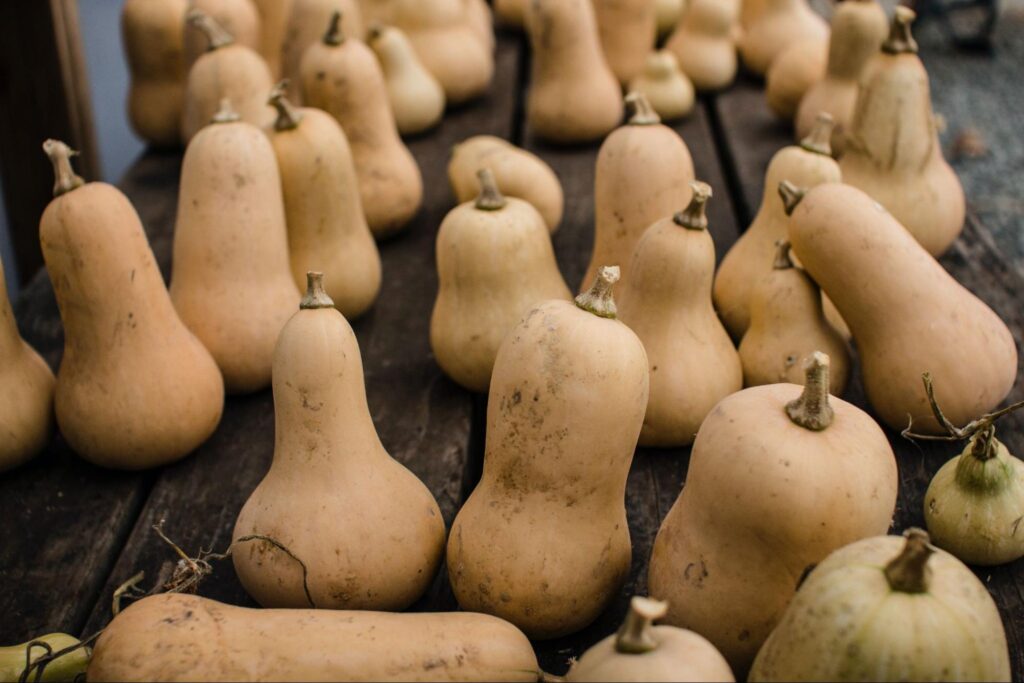
Image Source: Unsplash
Butternut squash is a top choice for winter squash. Its sweet, nutty flavor and creamy texture make it a favorite when cooked. This vibrant vegetable features a long, pear-like shape and smooth, beige skin. Inside, it hides bright orange flesh. Roasting it makes the flesh tender, rich, and slightly caramelized. If you’re searching for a healthy, delicious ingredient to add to your fall and winter recipes, butternut squash is an excellent choice.
Butternut squash is a very flexible ingredient. You can roast it, steam it, or mash it. It also works well in soups and sauces. It’s a top choice for anyone learning to cook butternut squash. The preparation is simple, and its natural sweetness attracts both kids and adults. This nutritious powerhouse is loaded with key vitamins and minerals. You’ll find vitamin A, vitamin C, fiber, potassium, and antioxidants in it. These nutrients support your immune system and help with digestion.
If you’re new to cooking or an experienced chef, learning about butternut squash is important. It can be used in many dishes and helps you add more healthy, seasonal vegetables to your meals. It’s also a perfect substitute for sweet potatoes or pumpkins in many recipes, making it a favorite among those following healthy eating plans or plant-based diets.
While you’re embracing fall flavors, it might also be time to tidy up your yard – check out the best leaf vacuum cleaners to keep your outdoor space clean before heading inside to cook.
Different Names of Butternut Squash
Butternut squash is a globally loved vegetable, but it goes by several different names depending on where you are in the world. Knowing these other names is great when you shop for butternut squash overseas or look for recipes from around the globe online. Here’s a breakdown:
-
Butternut Pumpkin: In Australia and New Zealand, butternut squash is commonly known as butternut pumpkin. It’s used in a variety of dishes just like traditional pumpkins, and the term reflects both its texture and culinary use.
-
Gramma: In certain parts of Australia, the term gramma is used to refer to butternut squash. This is more of a regional or traditional name, often seen in older cookbooks or local markets.
-
Winter Squash: In North America and Europe, butternut squash falls under the broader category of winter squash. This term includes a variety of hard-skinned squashes harvested in the fall, such as acorn squash, kabocha, and spaghetti squash.
These names highlight the cultural and regional differences in how butternut squash is recognized and used. If you want to learn how to cook butternut squash, knowing its other names helps. It’s also called butternut pumpkin, gramma, and winter squash. This can be useful when you’re looking for recipes or shopping at an international store.
Merits & Demerits Of Butternut Squash
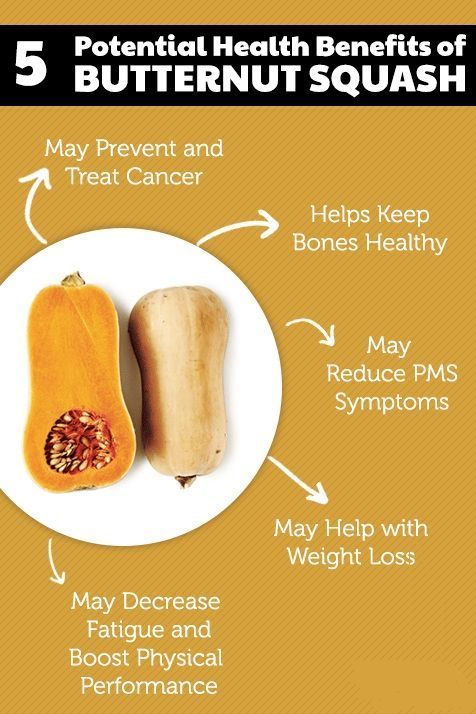
Image Source: Pinterest
Let’s first learn about the health benefits of cucurbita moschata before learning how to cook butternut squash!
Health Benefits of Butternut Squash
Butternut squash is not only delicious but also packed with nutrients that offer numerous health benefits:
1. Rich in Vitamins and Minerals
A single cup of cooked butternut squash provides:Verywell Health+2Healthline+2EatingWell+2
-
Vitamin A: Over 450% of the Recommended Daily Intake (RDI), essential for vision and immune function.
-
Vitamin C: More than 50% of the RDI, important for skin health and immune support.
-
Potassium: Helps regulate blood pressure and fluid balance.
-
Magnesium and Manganese: Support bone health and metabolism. Healthline
2. High in Antioxidants
Butternut squash contains antioxidants like beta-carotene, lutein, and zeaxanthin, which help combat oxidative stress and may reduce the risk of chronic diseases.
3. Supports Digestive Health
With its high fiber content, butternut squash aids in digestion, promotes regular bowel movements, and helps maintain a healthy gut microbiome. EatingWell
4. Promotes Eye Health
The high levels of vitamin A and carotenoids in butternut squash can help protect against age-related macular degeneration and support overall eye health. EatingWell
5. Aids in Weight Management
Low in calories and high in fiber, butternut squash can help you feel full longer, making it a great addition to weight management diets.
Drawbacks Of Butternut Squash
A. Rich in potassium
Although this is a healthy pick, it contains a high potassium content, too, which makes it a little infeasible when your potassium levels are imbalanced as it shouldn’t be too high in one’s body.
B. It may not be ideal for kidney patients
People with kidney problems should take care when consuming potassium in large quantities. Since it’s a potassium-packed fruit, your kidney may be unable to remove excess of it, especially when you’re already suffering from kidney disease.
Butternut Squash vs. Pumpkin: Key Differences
While butternut squash and pumpkin are both members of the Cucurbita genus, they have distinct differences:
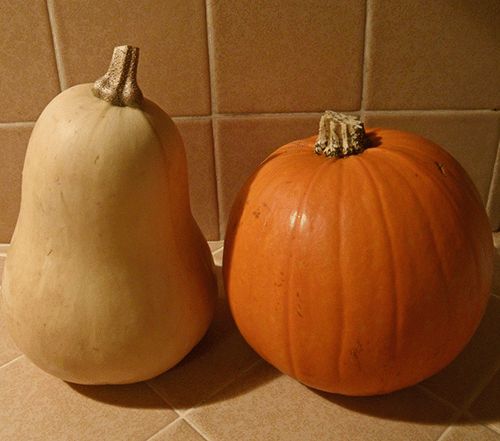
Image Source: Seasonal Eating
1. Flavor and Texture
-
Butternut Squash: Sweeter and nuttier flavor with a smooth, creamy texture when cooked.
-
Pumpkin: Milder flavor and more fibrous texture.
2. Nutritional Content
Butternut squash generally contains more vitamin A and fewer calories compared to pumpkin, making it a slightly more nutrient-dense option.
3. Culinary Uses
-
Butternut Squash: Ideal for soups, purees, and roasting.
-
Pumpkin: Commonly used in baking, such as pies and muffins.
How to Pick a Good Butternut Squash?
If you’re new to learning how to cook butternut squash, it all begins with picking the right one and storing it correctly to ensure maximum flavor, freshness, and nutritional value.
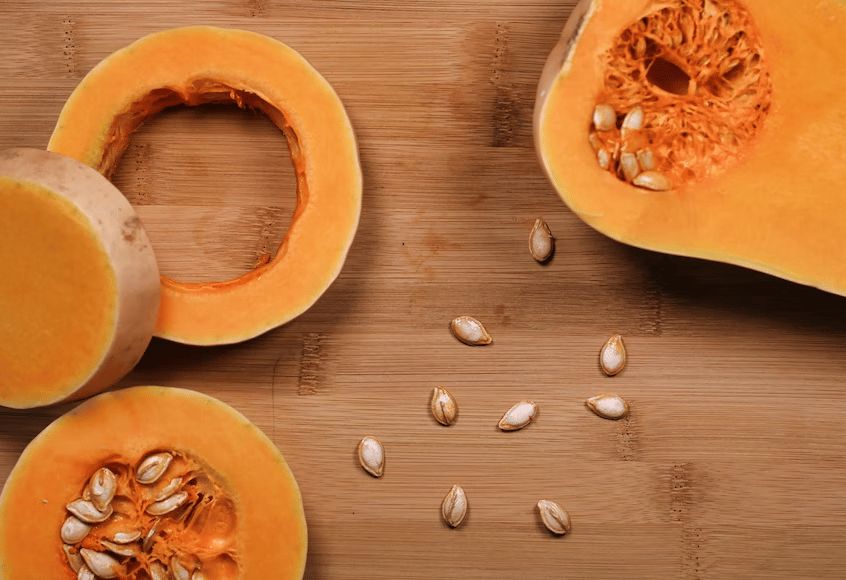
Selecting the Perfect Butternut Squash
-
Check the Skin Look for a squash with matte, tan-colored skin that’s free of blemishes, shiny spots, or cuts. Dull skin indicates ripeness, while shiny skin may suggest it was picked too early and lacks flavor.
-
Test the Weight A fresh butternut squash should feel heavy for its size. This means the flesh inside is dense, moist, and perfect for recipes like roasting, mashing, or making soup.
-
Inspect the Stem Make sure the stem is firm and intact. A healthy stem is a clear sign the squash was harvested properly and is still fresh.
Storing Butternut Squash Properly
-
Whole Butternut Squash Store uncut squash in a cool, dark, and dry place like a pantry or cellar. When stored properly, whole squash can last up to 2–3 months without going bad.
-
Cut Butternut Squash If you’ve already peeled or cut the squash, wrap it tightly in plastic or store it in an airtight container in the refrigerator. Use within 5–7 days for best flavor and texture.
Proper selection and storage are essential steps in mastering how to cook butternut squash. Starting with a ripe, fresh squash and keeping it stored correctly will make your dishes taste better and last longer in your kitchen.
How to Prepare Butternut Squash (Step-by-Step)
If you’re learning how to prepare butternut squash for the first time, follow these clear and easy steps to get perfect results every time:
Step 1: Trim the Ends
Begin by cutting off both ends of the butternut squash.
Doing this gives you a stable, flat surface, which makes peeling and cutting much safer.
Step 2: Peel the Skin
Grab a sharp vegetable peeler and gently remove the outer layer.
Because the skin is thick and tough, peeling it properly is key to smooth cooking.
tip: If peeling feels difficult, try microwaving the squash for 2–3 minutes to soften it first.
Step 3: Cut and Scoop
Next, slice the squash lengthwise down the middle.
Then, take a sturdy spoon and scoop out the seeds along with the stringy center from each side.
Want less waste? Roast the seeds for a healthy, crunchy snack!
Step 4: Chop into Desired Shapes
Once you’ve scooped the center, cut the squash into shapes your recipe calls for.
Popular cuts include cubes, slices, or wedges, all of which are great for roasting, soups, or stir-fries.
Tips
-
Microwave Hack: A short microwave session makes peeling easier by softening the skin.
-
Roasted Seeds: Toss seeds with oil and seasoning, then roast for 15–20 minutes at 350°F for a crunchy treat.
If you’re cooking in a smaller space, an open kitchen design can make meal prep feel more spacious and inviting.
Best Cooking Methods for Butternut Squash
If you’re wondering how to cook butternut squash in a way that brings out its naturally sweet and nutty flavor, you’re in luck! This versatile vegetable can be prepared using several simple and healthy cooking techniques. Each method changes the texture and taste of butternut squash. This makes it great for many recipes, like soups, salads, side dishes, and casseroles.
1. Roasting Butternut Squash
-
One of the best ways to cook butternut squash is roasting. Roasting enhances the squash’s sweetness and caramelizes the edges for a rich, nutty taste.
-
Method: Toss cubed butternut squash with olive oil, salt, and pepper. Spread evenly on a baking sheet and roast at 400°F (200°C) for 25–35 minutes until tender and golden brown. This method works great for meal prep or salads.
If you’re into fun fall treats, you might also enjoy learning how to make tanghulu—a sweet and crunchy snack that pairs perfectly with roasted seeds.
2. Steaming Butternut Squash
-
If you want a healthy way to cook butternut squash without oil, steaming is a perfect choice. It helps retain nutrients while softening the flesh.
-
Method: Place peeled and cubed squash in a steamer basket over boiling water. Cover and steam for 10–15 minutes, or until soft. Use steamed squash in baby food, purees, or healthy side dishes.
3. Boiling Butternut Squash
-
Boiling is a quick and easy method if you’re making soups, stews, or mashed butternut squash.
-
Method: Add cubed squash to a pot of salted boiling water and cook for 10–15 minutes until fork-tender. Drain and mash or blend as needed. Boiled squash is ideal for recipes where a soft texture is required.
4. Sautéing Butternut Squash
-
For a flavorful and fast option, sautéing butternut squash gives a slightly crispy texture on the outside while keeping it tender inside.
-
Method: Slice the squash thin or cut into small cubes. Sauté in a skillet with oil or butter over medium heat until golden and soft. Add herbs or garlic for extra flavor.
Sautéed squash is a perfect side—especially when paired with a dish like this rich and savory tomato confit.
5. Microwaving Butternut Squash
-
Need a fast method? Microwaving butternut squash is the quickest way to soften it, especially if you’re short on time.
-
Method: Place cubed squash in a microwave-safe dish with a splash of water. Cover and microwave on high for 5–10 minutes until soft. This method is great for quick mashing or blending.
By using these simple cooking techniques, you can learn exactly how to cook butternut squash at home with ease. Whether you’re roasting for a crispy texture or steaming for a healthy puree, these methods help you unlock the best flavors and nutrition from this fall favorite. Let your choice of method match your recipe and enjoy the natural versatility of butternut squash in every meal!
Top 3 Butternut Squash Recipes
1 – Stuffed Butternut Squash
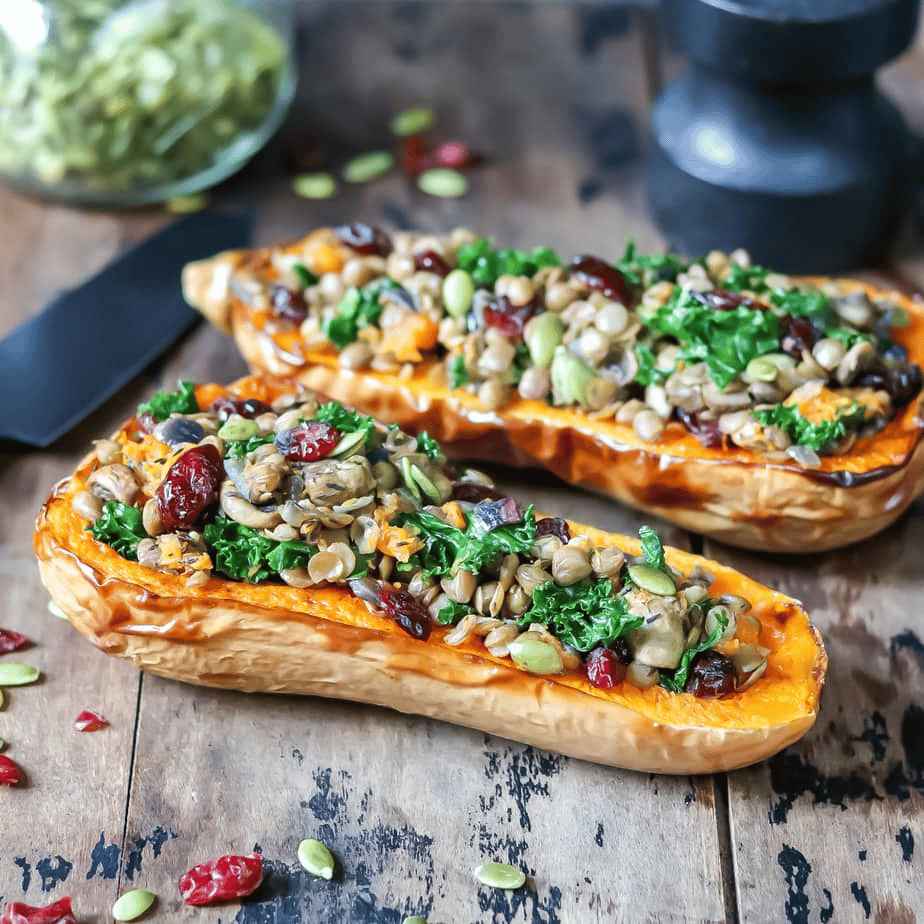
Image Source: Veggie Desserts
Ingredients:
-
1 large butternut squash
-
1 cup cooked quinoa
-
1/2 cup chopped spinach
-
1/4 cup dried cranberries
-
1/4 cup chopped walnuts
-
1/2 cup crumbled feta cheese
-
2 tablespoons olive oil
-
🧂 Salt and pepper to taste
Instructions:
-
Preheat oven to 375°F (190°C).
-
Halve the squash lengthwise and scoop out the seeds.
-
Brush the cut sides with olive oil, season with salt and pepper.
-
Roast cut-side down for 30–40 minutes, or until the squash is tender.
-
In a bowl, combine quinoa, spinach, cranberries, walnuts, and feta.
-
Fill the roasted squash halves with the quinoa mixture.
-
Return to the oven and bake for an additional 15 minutes.
-
Serve hot with optional garnish of fresh parsley or a drizzle of balsamic glaze.
Cooking Step-by-Step:
Step 1: Preheat the Oven
Preheat your oven to 375°F (190°C). This is the best temperature for roasting butternut squash to achieve a soft, caramelized texture.
Step 2: Prepare the Butternut Squash
Slice the squash in half lengthwise. Use a spoon to scoop out the seeds and stringy pulp to create a hollow center. This space will later be used for stuffing.
Step 3: Season and Roast the Squash
Brush the inside of the squash with olive oil and sprinkle generously with salt and pepper. Place the squash halves cut-side down on a lined baking tray and roast in the preheated oven for 30 to 40 minutes until fork-tender.
Step 4: Mix the Quinoa Filling
In a large mixing bowl, combine cooked quinoa, chopped spinach, dried cranberries, walnuts, and crumbled feta cheese. Add a tablespoon of olive oil and season lightly with salt and pepper. This creates a protein-packed, flavorful vegetarian stuffing.
Step 5: Stuff the Roasted Squash
After roasting, flip the squash halves over. Spoon the quinoa filling into each half, packing it firmly but not overflowing. This step turns your squash into a hearty, nutritious main dish.
Step 6: Final Bake for Flavors to Combine
Return the stuffed squash to the oven and bake for 15 more minutes. This melts the cheese slightly and helps the ingredients blend into a rich, savory-sweet flavor.
Step 7: Serve & Enjoy
Remove from the oven, let it rest for a few minutes, and then serve warm. For extra flavor and presentation, garnish with fresh herbs or a drizzle of balsamic glaze.
This recipe is perfect for anyone searching for:
-
how to make vegetarian stuffed butternut squash
-
easy quinoa butternut squash bake
-
healthy fall dinner recipes with butternut squash
2 –Butternut Squash Soup Recipe (Creamy, Easy, and Vegan-Friendly)
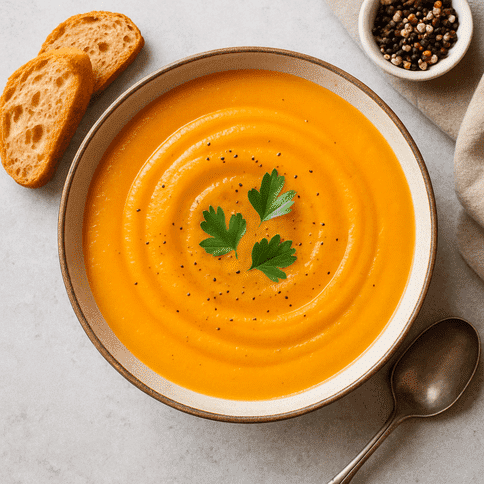
Ingredients:
-
1 tablespoon olive oil
-
1 onion, chopped
-
2 cloves garlic, minced
-
1 large butternut squash, peeled and cubed
-
1 carrot, chopped
-
3 cups vegetable broth
-
1/2 teaspoon ground nutmeg
-
Salt and pepper to taste
-
1/2 cup coconut milk or cream (optional, for added creaminess)
Instructions:
-
In a large soup pot, heat olive oil and sauté the chopped onion and minced garlic until they are soft and aromatic.
-
Add the cubed butternut squash and chopped carrot. Sauté for around 5 minutes to bring out their natural sweetness.
-
Pour in the vegetable broth. Bring to a boil, then reduce the heat and let it simmer for about 20 minutes or until all vegetables are soft.
-
Use a hand blender or regular blender to puree the mixture until it’s smooth and creamy.
-
Stir in nutmeg, salt, pepper, and coconut milk if you’re using it for a rich and velvety finish. Serve warm and enjoy!
Step-by-Step Cooking Process:
Step 1: Sauté Aromatics for Flavor Depth
In a heavy-bottomed pot or Dutch oven, heat olive oil over medium heat. Add the chopped onion and minced garlic. Sauté them gently until translucent and fragrant, about 3–5 minutes. This builds the savory flavor foundation of your soup.
Step 2: Add the Vegetables
Stir in peeled and cubed butternut squash and chopped carrots. These vegetables are not only nutritious but also ideal for a creamy, rich soup. Cook them together for about 5 minutes to slightly soften and enhance their flavors.
Step 3: Simmer in Vegetable Broth
Pour in 3 cups of vegetable broth, bringing the mixture to a boil. Once it boils, reduce the heat and let it simmer for 20 minutes, allowing the squash and carrot to become tender and absorb the broth’s savory notes.
Step 4: Blend to Creamy Perfection
Using an immersion blender (or transferring to a blender in batches), puree the soup until silky smooth. This creates that restaurant-quality creamy butternut squash soup texture that’s perfect for fall or winter meals.
Step 5: Add Flavor Boosters
Stir in nutmeg, a pinch of salt, and freshly ground black pepper to balance the sweetness of the squash. For a dairy-free creamy texture, add coconut milk or cream, a popular option in vegan butternut squash soup recipes.
Step 6: Serve Warm and Enjoy
Ladle the soup into bowls and garnish with a drizzle of coconut cream or roasted pumpkin seeds for texture. This dish pairs wonderfully with crusty bread or a grilled cheese sandwich for a cozy, satisfying meal.
3 – Roasted Butternut Squash Salad (Warm, Flavorful & Nutritious)
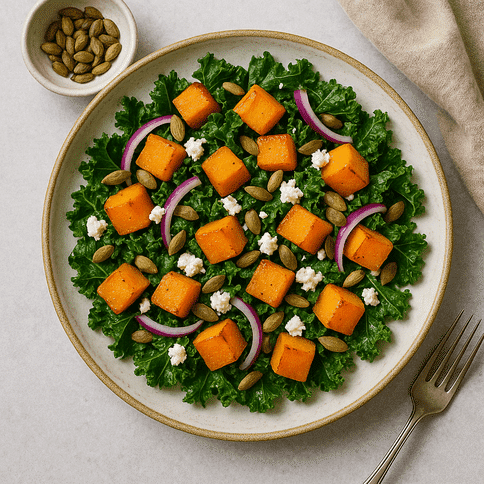
Ingredients:
-
2 cups cubed roasted butternut squash
-
1/4 cup pomegranate seeds
-
1/4 cup crumbled feta cheese
-
2 cups mixed greens or arugula
-
2 tablespoons balsamic vinaigrette
Instructions:
-
Spread a generous portion of fresh mixed greens or arugula evenly onto a serving plate or salad bowl.
-
Top the greens with warm, roasted butternut squash cubes, pomegranate seeds, and crumbled feta cheese.
-
Drizzle balsamic vinaigrette evenly over the salad. Serve immediately for the best flavor and texture.
Cooking Steps for Roasted Butternut Squash Salad (Step-by-Step Guide):
Step 1: Prepare the Butternut Squash
To begin, preheat your oven to 400°F (200°C). Peel and cube fresh butternut squash into bite-sized pieces. Toss them with a little olive oil, salt, and pepper, and roast on a baking sheet for about 25–30 minutes, or until golden brown and tender. Let them cool slightly before assembling the salad.
Step 2: Build Your Salad Base
Choose a mix of fresh greens such as baby spinach, arugula, or spring mix. Lay them out on a serving dish. These greens add a fresh, peppery contrast to the natural sweetness of the roasted squash.
Step 3: Add Sweet & Savory Toppings
Sprinkle pomegranate seeds over the greens to add juicy bursts of flavor and antioxidants. Then, add crumbled feta cheese, which gives the dish a tangy creaminess that complements the sweetness of the squash perfectly.
Step 4: Assemble with Roasted Squash
Place the slightly warm, roasted squash over the salad. The warmth of the squash softens the greens slightly, blending the textures beautifully.
Step 5: Drizzle & Serve
Finish the salad with 2 tablespoons of balsamic vinaigrette for a rich, tangy finish. This adds a gourmet touch and ties all the ingredients together with a balanced flavor.
Final Words
Butternut squash is a delicious, nutrient-rich vegetable that belongs in every kitchen. From comforting soups and vibrant salads to hearty stuffed recipes, it’s endlessly versatile. Butternut squash is popular in kitchens all over the world. Its long shelf life, health benefits, and delicious taste make it a top choice.
Whether you roast it for dinner, mix it into salads, or blend it into soups, this guide will help you enjoy butternut squash in all its forms.
As the scent of roasted squash fills your home, consider enhancing the ambiance with one of the best air fresheners for home to keep your kitchen smelling fresh and cozy.
Looking for more seasonal tips, gardening guides, or cooking advice? Explore our Outdoor Tips section for inspiration, tools, and expert advice to elevate your backyard experience.
FAQs
Can You Eat the Skin of Butternut Squash?
Yes, the skin is edible when cooked, especially when roasted. However, most people prefer to peel it for a smoother texture.
Is Butternut Squash Good for Diabetics?
Yes! It’s relatively low in carbohydrates and high in fiber, which helps regulate blood sugar levels. Still, moderation is key.
How Long Does Butternut Squash Last?
-
Whole squash: 2–3 months in a cool, dry place.
-
Cut squash: 5–7 days in the fridge.
-
Cooked squash: Up to 3 months in the freezer.
Can Butternut Squash Be Eaten Raw?
Yes, it can be grated or spiralized into salads, but cooking enhances its flavor and texture.

